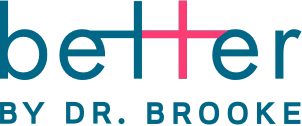Food labels can be difficult to decipher and smart marketing can make a food appear healthier than it is. This guide will help you really know what you’re eating when your opt for a packaged food. Allowable Claims that you may see on labels that are “guidelines” for making healthy choices: 1. Eating enough calcium may help prevent osteoporosis. (green leafy veggies are great sources of calcium) 2. Limiting the amount of sodium you eat may help prevent hypertension. (true, but note that not all hypertension is sodium related) 3. Limiting the amount of saturated fat and cholesterol you eat may help prevent heart disease. (saturated fat is just one factor in heart disease, some saturated fats like coconut oil do not contribute to poor health ) 4. Eating fruits, vegetables and grain products that contain dietary fiber may help prevent heart disease. (this is why oatmeal can claim it lowers cholesterol, however it’s best to get your fiber from vegetables and fruits) 5. Limiting the amount of total fat you eat may help reduce your risk for cancer. 6. Eating fiber-containing grain products, fruits and vegetables may help prevent cancer. (the best starchy fiber sources are sweet potato, yam, pumpkin, winter squashes and legumes, followed by sprouted grain products and whole grains like oats, quinoa and brown rice.) 7. Eating fruits and vegetables that are low in fat and good sources of dietary fiber, vitamin A or vitamin C may help prevent cancer. 8. Organic – this can get tricky. Technically a product needs to have 95% organic ingredients to put “organic” as part of the product name. For more details, see the USDA website. What Common Label Terms Mean Dietary Fiber High fiber: 5 grams of fiber or more per serving A good source of fiber: 2.5 g – 4.9 g of fiber per serving Fat Fat Free: less than 0.5 grams of fat per serving Low Fat: 3 grams of fat or less per serving Lean: less than 10 grams of fat, 4.5 grams of sat fat and no more than 95 mg of cholesterol per serving Extra-lean: less than 5 grams of fat, 2 grams of saturated fat & 95 mg of cholesterol per serving Low in saturated fat: 1 gram of sat fat or less per serving and not more than 15% of calories from saturated fatty acids Reduced or less fat: at least 25% less fat per serving than the higher-fat version Cholesterol Goal is 300 mg or less of cholesterol per day. Low cholesterol: 20 mg of cholesterol or less and 2 grams of saturated fat or less per serving Reduced cholesterol: at least 25% less cholesterol than the higher-cholesterol version and 2 grams of less of saturated fat per serving Cholesterol free: less than 2 mg of cholesterol or 2 grams or less of saturated fat per serving Sugar Sugar free: less than ½ gram of sugar per serving Low Sugar: may not be used as a claim Reduced Sugar: at least 25% less sugar per serving when compared with a similar food No added sugars, without added sugar, or no sugar added: no amount of sugar or any other ingredient that contains sugars that functionally substitute for added sugars is added during processing or packaging, the product contains no ingredients that contain added sugars such as jam, jelly or concentrated fruit juice Calories Calorie Free: fewer than 5 calories per serving Low Calorie: 40 calories or less per serving Light or “Lite”: 1/3 less calories or no more than ½ the fat of the higher-calorie, higher-fat version Reduced Calorie: at least 25% fewer calories per serving when compared with a similar food Sodium Goal is 2400 mg or less of sodium per day Light in Sodium: no more than ½ the sodium of the higher-sodium version Sodium Free: less than 5 mg of sodium per serving and no sodium chloride (NaCl) in ingredients Very Low Sodium: 35mg of sodium or less per serving Low Sodium: 140 mg or less per serving Reduced or less sodium: 25% less sodium per serving than the higher sodium version A couple more terms to be aware of: · Free has the least amount of an ingredient and Very Low and Low have slightly more · Reduced or Less always means that the food has 25% less of that nutrient than the reference version of that food · Good Source Of means that it contains 10-19% of the Daily Value (DV) per serving · High, Rich In, Excellent Source Of means that it contains 20% or more of the DV per serving. · More, fortified, enriched, or added means that it contains at lest 10%more of the DV for protein, vitamins, minerals or fiber per serving. · Fresh means that it has not been frozen, heat processed or similarly processed

0